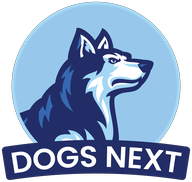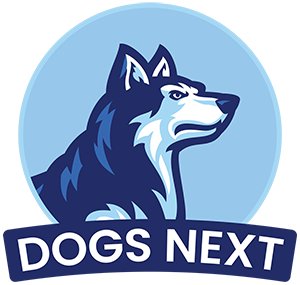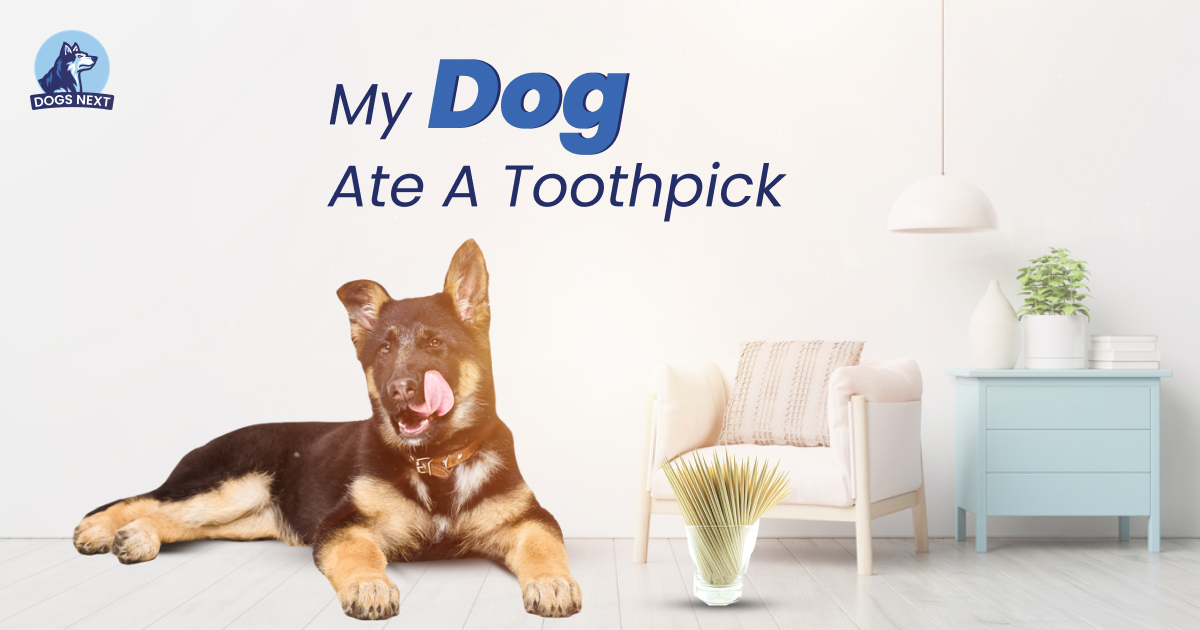If your dog ate a toothpick, taking immediate action is essential to prevent any complications. There are serious health risks associated with toothpicks, including damage to the digestive tract. Schedule your dog’s appointment with your veterinarian as soon as possible.
If your dog presents symptoms or displays any behavior that is unusual, such as vomiting, diarrhea, abdominal pain, or loss of appetite, your vet may ask you to keep a close eye on his symptoms and behavior. Before giving any medications or inducing vomiting, consult your veterinarian.
The best course of action depends on the location of the toothpick and what diagnostic tests your veterinarian performs. These tests may include X-rays or ultrasounds. In severe cases, surgery, medication, and hospitalization may be involved in the treatment plan.
Table of Contents
My Dog Ate A Toothpick accidentally What Should I Do Now
Emergency procedures for accidental toothpick ingestion in dogs typically involve seeking veterinary care immediately. Here are some steps you can take:
Consult a veterinarian
There is no need to let the situation matter, as soon as you realize what has happened, you must call your vet to get your pet checked. Whether it is after hours or at the weekend if you need to reach a department, don’t wait until it opens next. Get your dog to the veterinary clinic as soon as possible by calling the emergency line!
Analyze the type (and number) of toothpicks he consumed
It’s important to figure out what type and how many toothpicks he consumed next. Your vet will be able to determine a treatment plan more accurately if you are more accurate! The following types of toothpicks have essential differences (and common examples):
- Classic wooden toothpicks
- Classic plastic toothpick
- Flagged plastic toothpick
- Looped plastic toothpick
- Classic wooden toothpick
- Blunted wooden toothpick
- Painted wooden toothpick
Several of these are, as you can probably imagine, more dangerous than others, but it’s not necessary to worry about them all. In order for your dog to have the best outlook and well-being, you need to inform your vet about the exact situation they are faced with.
Be aware of potential problems
As your dog works on passing the toothpick, we discuss some common signs of complications. If your dog shows any of these symptoms, you should take him to the veterinarian immediately. The more symptoms he has, the more urgent it is for you to take him.
It is possible for even the best veterinarian in the world to be unable to prevent these symptoms from spiraling into a life-ending combination. It is better to intervene sooner rather than later. Your vet would prefer it if you brought him in if any of these develop than to wait until they do.
Always follow the advice of your veterinarian
Make sure you follow your vet’s instructions strictly, whether you visit your doctor or receive instructions at home. If the bread needs to be fed, then feed it. It is advisable to follow the instructions of the physician if they recommend not inducing vomiting at home.
Veterinary advice is the best way to ensure that your dog is doing what it should be doing. In the same way, if your vet recommends that you take your dog to the veterinarian, please do so.
Examine their bowel movements for toothpicks
You can wait at home until the dog passes the toothpick if your vet recommends it (rare). You should monitor their bowel movements closely if that is the case, so you can see if the toothpick is still present.
It would be best to get your hands inside there, too, to look for it, along with your (gloved) fingers. Even after your dog passes the toothpick, keep an eye on him, as bacterial infections can develop after he passes it.
Feed Soft Food To Your Dog
There’s a good chance your dog is in pain if he ate a toothpick. The best thing you can do for them is to ease their discomfort by providing them with soft food to eat.
Give Peanut butter + Bread
Your dog should be fed a piece of white bread with butter immediately after swallowing a toothpick, which is the ideal solution.
The purpose of the wrapping is to allow the stick to pass easily (and hopefully without causing anything to occur to your dog’s intestines) as opposed to causing damage to it.
As soon as your dog has successfully swallowed the toothpick(s), you should check for signs of the toothpick(s).
In some ways, this will be the most unpleasant step you will have to take, but it’s necessary if you want to ensure the safety of your dog.
As you squish each piece of feces between your fingers, you will be able to find the remnants of the toothpick. If the gloves are too thick, you will not be able to feel anything and this can lead to health complications.
There is no doubt that the little stick will not look the same as it did when it was put in, so using caution when you check it is very important.
There are also other methods you can use, such as picking the stools up with a plastic bag, as you would when you were on a walk, and checking them through that, but you may have a harder time recognizing the toothpick by feeling it in the bag.
Give Sauerkraut
Sauerkraut is sliced raw cabbage that has been salted and fermented and is a food that many people recommend giving their dogs. This can also be given together with other forms of raw cabbage.
A lot of supermarkets sell it ready-to-eat, and it was originally a German recipe. It’s unlikely that your dog will like it, but you can mix it with beef broth to make it more appealing.
It’s a good idea to give your dog 1-2 tablespoons of Sauerkraut along with plenty of water for a few days and see what happens.
In order to prevent your dog from consuming too much fat, sauerkraut is a good alternative to peanut butter. Adding the cabbage strips will soften the pointy ends of the toothpick as well as assist digestion.
Do Not Try To Induce Vomiting
The most common recommendation for dogs who have ingested foreign objects is to induce vomiting. The only thing to remember is to avoid using toothpicks in this situation.
There is a sharp edge to a toothpick. In this case, the sharp edges of the toothpick may cause wounds to your dog if you attempt to induce vomiting.
Types of toothpick
All types of toothpicks can potentially be dangerous for dogs, regardless of breed. Not only toothpicks but also all kinds of sharp objects are dangerous for dogs. Sharp objects cause internal bleeding, sometimes it depends on how many pieces of toothpicks are eaten.
However, some toothpicks may be more hazardous than others depending on their size, shape, and material. For example, wooden toothpicks may break apart and splinter in the digestive tract, causing perforations or blockages.
Here are some common types of toothpicks:
- Wooden toothpicks – these are the most common type of toothpick and are often made from birchwood.
- Plastic toothpicks – these are made from various types of plastic and are often marketed as disposable or reusable toothpicks.
- Metal toothpicks – these are made from stainless steel or other metals and are often marketed as reusable toothpicks.
- Bamboo toothpicks – these are made from bamboo and are often marketed as eco-friendly alternatives to wooden toothpicks.
- Flavored toothpicks – these are toothpicks that are flavored with various types of oils or extracts, such as cinnamon or peppermint.
In general, it’s best to keep all toothpicks, as well as other small objects that your dog may be able to swallow, out of their reach. If your German Shepherd has already ingested a toothpick or any other foreign object, it’s important to seek veterinary care immediately, as complications can arise quickly.
Toothpicks can be digested by dogs?
Toothpicks cannot be broken down or digested by a dog’s stomach acid. The wooden ones, as well as the plastic ones, are included. The digestive tract becomes twisted and turned as the splintered fragments are pushed through the system, making them equally dangerous.
Dogs are more likely to chew and splinter wooden ones, but both are equally dangerous due to the fact that they inevitably twist and turn throughout the system. Your dog will not do well if he goes the “wrong way” because they are pointed and have sharp edges.
In spite of the fact that a dog’s stomach is strong and capable of breaking down many things, it has no ability to digest wood. However, it cannot completely dissolve wood into something that can be safely passed through.
Can A Toothpick Kill A Dog?
Dogs can be killed by toothpicks, unfortunately. In spite of the fact that they seem harmless, people commit these crimes a lot more often than they realize.
In the absence of a vet’s evaluation, a dog could very easily die from a toothpick if he is used without a vet’s assessment. As they become smaller, the greater the likelihood that they will pose a threat to the public.
Can A Dog Pass A Toothpick?
It is technically possible to pass a toothpick through a dog’s mouth. The passing of a toothpick usually results in severe injuries and damage, posing a life-threatening risk to a dog. If a veterinarian offers this service, they are most likely to do so only under their supervision or if the risk of surgery is not considered to be significant.
The amount of time it takes for a dog to pass a toothpick varies from one to two days. However, what your dog eats after the incident will make a huge difference in the amount of time it takes.
Medical Treatment For Accidental Toothpick Ingestion In Dogs
The medical treatment for accidental toothpick ingestion in dogs typically involves seeking veterinary care immediately.
The veterinarian may perform diagnostic tests and may induce vomiting, give medication to promote bowel movements, or surgically remove the toothpick depending on the severity of the situation. Dogs who experience abdominal discomfort may require additional care and monitoring to ensure a full recovery.
What should I do if my dog throws up a toothpick?
You would be surprised to learn that your dog ate a toothpick if you weren’t aware of it. Many dogs, especially if they have food on them, will eat more than one, especially if they have some scent that tells them they are going to eat tasty stuff.
Take your dog to the veterinarian if you notice that a toothpick has been thrown up, as your dog may have swallowed more than one toothpick, causing more toothpicks to lodge in the throat or other areas of the dog.
It is actually a good sign if your dog threw up a toothpick when he has eaten one, so you should not worry if he ate a toothpick and then threw up the toothpick! As a result, it won’t pass through his digestive tract since he’s pushed it back up.
Be sure to check it carefully to make sure it is intact and that your dog’s stomach is not filled with swill. For your own safety, it’s still a good idea to take him to your local veterinarian or an emergency vet.
Symptoms To Look For If Your Dog Ate A Toothpick
Whenever a toothpick is eaten by your dog, you should be on the safe side. Unless these symptoms become prominent and are severe enough to cause you concern, it is important not to wait for them to become apparent.
Otherwise, your pet’s condition might be too compromised, and invasive surgery will have to be performed, which is both expensive for you, and extremely painful for them.
In the event that your dog eats a toothpick, here are some symptoms to watch out for:
- When you vomit:
An indication that your dog is uncomfortable. The idea that your dog might be attempting to get rid of a toothpick is concerning, particularly if it is projectile vomiting. They may become entangled in it, which is dangerous. - Deficiency of energy:
You should definitely consult your veterinarian if you notice your dog is lazier than usual, gets tired easier, or appears to be less energetic than usual. - Appetite deficit:
If your dog does not feel well or is sick, it may not be able to eat. There may also be a problem preventing them from absorbing any food. This is a major indication that there is a problem with the digestive system. - Pose unusually:
It is possible that your dog is experiencing pain or discomfort in their abdomen if you notice that they are walking or moving differently than usual, due to the toothpick causing a blockage or internal wound. - Gingival paleness:
A sign like this is extremely concerning and must never be ignored. Dogs with pale gums may be suffering from internal bleeding, kidney disease, infections, or bacteria causing the gums to turn pale. - An infection:
It is important to check your dog’s temperature on a regular basis if he ate a toothpick. A reading of 101-102 is considered normal, but if it is higher, there might be a persistent infection that needs to be treated immediately. - Anatomy of blood:
Your dog may have bleeding wounds due to a toothpick piercing his stomach or intestines, causing blood in his vomit or feces. Make an appointment with the veterinarian as soon as possible
Signs and symptoms of a dog who has ingested a foreign object
| Symptom | Description |
| Vomiting | Expelling stomach contents |
| Diarrhea | Loose or watery stool |
| Loss of appetite | Decreased interest in food |
| Abdominal pain | Discomfort or tenderness in the belly |
| Lethargy | Lack of energy or interest in activities |
| Difficulty | Breathing Struggling to breathe or gasping |
When a toothpick is eaten, what will the veterinarian do?
Your vet will recommend endoscopic procedures or surgical procedures for your dog if they recommend treatment.
A toothpick can be used as part of an endoscopic procedure when the dog is able to reach it. For dogs who may not be able to tolerate surgery, these are usually safer alternatives to surgical ones. There are, however, times when they don’t succeed.
In cases where a toothpick has perforated the intestines, surgery is often the only option. In addition to extracting the toothpick, the vet should check around the intestines for damage and repair the area around it.
Your dog may require an antibiotic treatment after either treatment to help combat any potential infection that may develop from the intestinal perforations.
It is too risky for your dog to undergo a procedure. Depending on where you live, your doctor might want to keep your child overnight in order to monitor his health for any complications, while waiting and watching your child as the toothpick passes. It is very rare that professionals will send you the dog to observe until they have had it trained or supervised by a professional.
Frequently Asked Questions
Q: Do I need to worry if my dog ate a toothpick?
Ans: You should take your dog to the veterinarian as soon as possible if they swallowed a toothpick. If you do not treat your dog’s toothpicks correctly or in time, you are putting your dog at risk because they may puncture or block the digestive system and cause serious damage to him.
Q: Does my dog eat foreign objects if I don’t want him to?
Ans: Prevent your dog from eating foreign objects like toothpicks by keeping potentially dangerous objects out of reach. You can also teach your dog to “leave it” on command in addition to teaching him to drop things.
Q: Foreign objects are swallowed by dogs? Are there any signs of this?
Ans: A dog may become sick or feel lethargy if they swallow a toothpick or another foreign object. It is crucial to seek veterinary care as soon as possible if your dog appears to have consumed something it shouldn’t have.
Conclusion
If a toothpick is found in the stomach of your dog, pet owners must act immediately. It’s important to recognize the signs of an issue before it becomes too serious, even if prevention is the best approach. It can be dangerous for a dog to delay treatment if he eats a toothpick. Any foreign object swallowed by a dog should be treated immediately with veterinary care.
Keep harmful objects out of reach of your dog and supervise closely so as to minimize the risk of foreign objects getting into your dog’s system. As a responsible pet owner, you should also take preventative measures to keep harmful objects, and boxes of toothpicks away from your dog.
Read More: What to do if my dog ate glass?

I’m David, an expert contributor and writer, with two furry friends of my own, I know the challenges of raising and caring for dogs. From training to nutrition and health, my goal is to provide valuable insights and advice to help create strong bonds and happy, healthy lives. Find me in Twitter.




